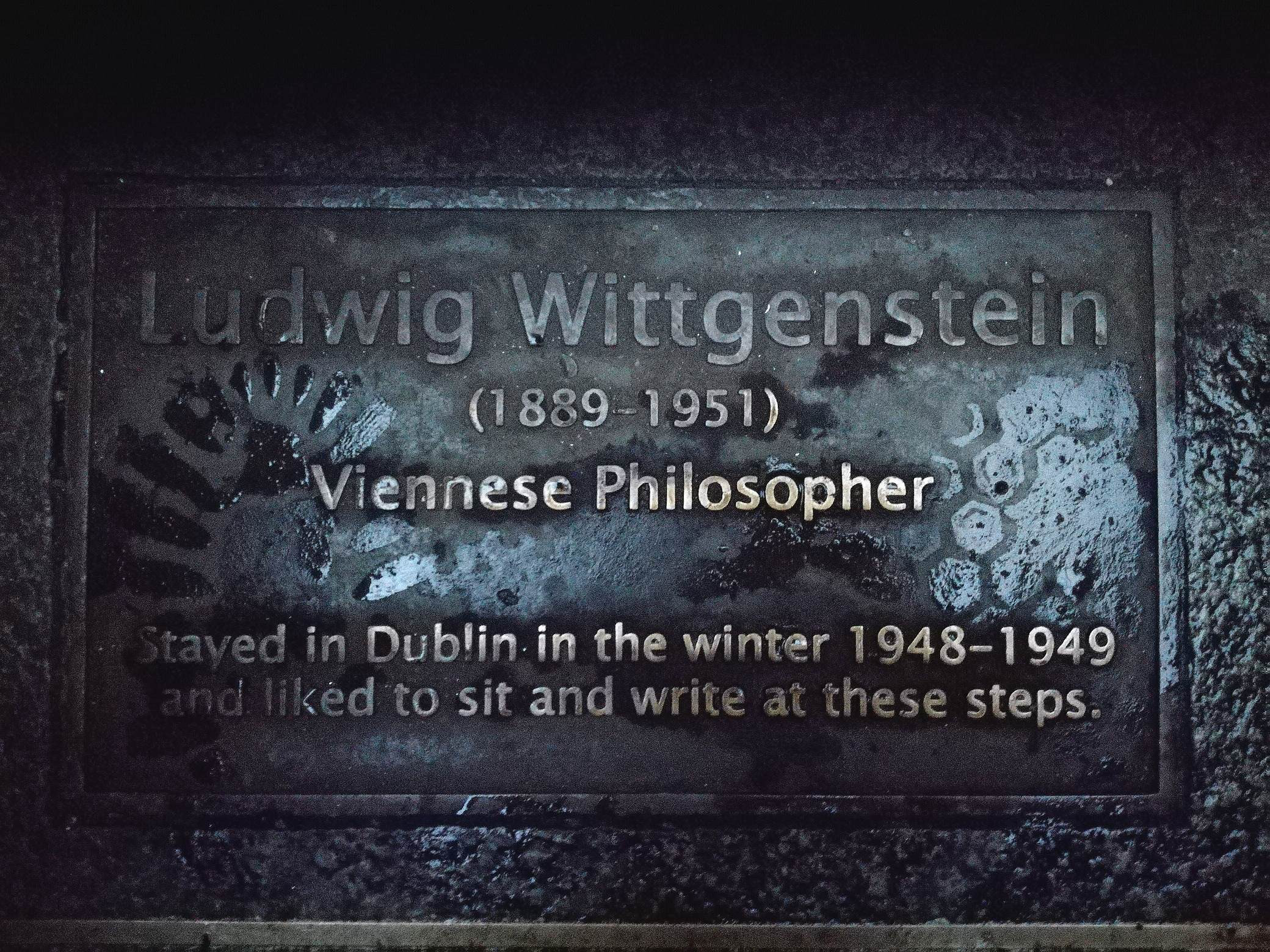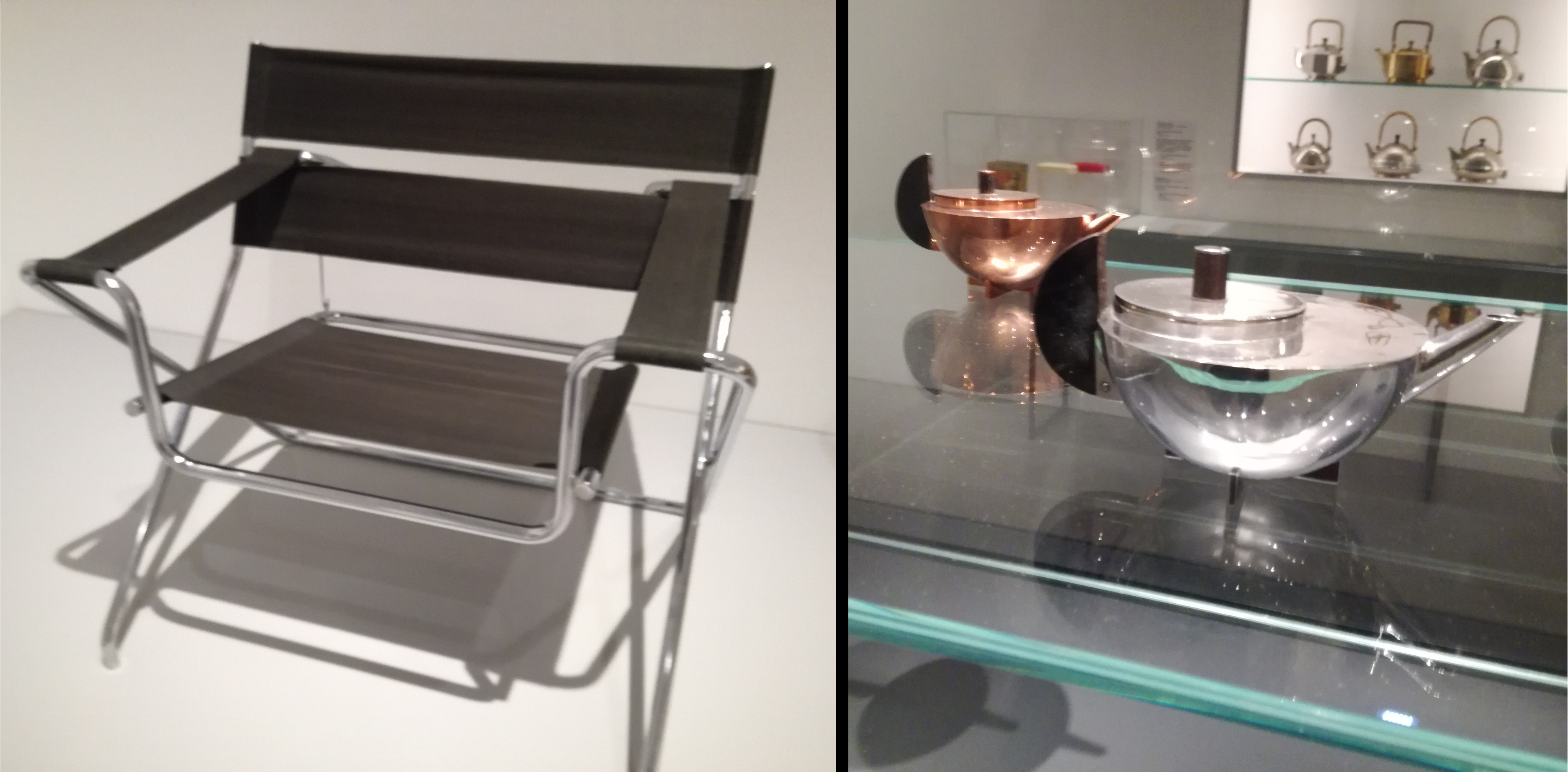on
Temporal collage of thoughts from Berlin and Munich travel experience
The idea behind a temporal collage of travel experiences came from the feeling of not being able to trace a coherent temporal line of events when I try to recall them. When travelling, I felt as if my memory shaped images of the past based on emotions, relative value and other closely related memories. Art that would make me feel something similar - between which I made a link - would transform afternoons of seperate days into temporally indistinguishable memories. In a sense, a temporally incoherent memory of events is created, but in the other hand, it is coherent when viewed in its context - one of emotions, of sharing ideas with people a posteriori etc. The same way that in spatial collages pieces of different materials, textures and colours blend together to create the whole; in temporal collages, events with different contexts are joined through dim relationships. This post, following the idea of a temporal collage, is a more human perspective of travel experiences and how our brain shapes them.
Sounds echo behind the curtains that split the main hall from the Bergama Stereo exhibition, as if warning and creating suspense for what’s lying behind it. Opening the curtains, one sees a rather underwhelming black structure with modular pieces of black and grey colour, but what really matters is the multitude of sounds coming from speakers in the pillars and every wall, pointing away and into the altar; some sounds increasing in pitch, others fading way in a strong bass. From the pamphlet one reads:
“In Bergama Stereo […] sound assumes the central role that visual elements play in the original [Pergamon] altar, creating a multi-dimensional narrative that related not only to the histories of the past, but also to here and now”.
Bergama Stereo is an abstract concept in the sense that it that aims to fill the void of the Pergamon altar in Berlin, currently being restored and closed to the public. The Pergamon altar visually depicts the war of the giants and titans against the olympian gods engraved in stone; meanwhile Bergama Stereo depicts the sounds of war.
 Bergama Stereo (Left) and Pergamon altar (Right) in Berlin
Bergama Stereo (Left) and Pergamon altar (Right) in Berlin
While exploring the space in three dimensions, one can note how, in the back of the altar, the sounds follow a slower rhythm, being composed of less sources (speakers) and therefore being less complex. Approaching the center, multiple sources appear only to seamlessly disappear after one false step to the side. Acute and grave sounds combine at different rhythms yielding one melody that projects the subject into their own imagination of what an hypothetical mythical war could be. It was curious how approaching the Bergama Stereo from different paths yielded different sound experiences: starting far away and facing the altar while walking towards it resulted in a beat slowly growing in rhythm and intensity, with a rewarding climax in the stairs; while approaching from the sides resulted in a sharp contrast in melodies.
Victorian greenhouse, with it’s windows fogged on the inside, steaming with an unbearable heat. I must be sitting in the only place without a drop of water. This warmth and comfort contrasts with the coldness and anonymity I have been feeling in Berlin. Everything seems so dark but not inhuman, just … missing, absent. Why am I here, in this botanical garden in Berlin, in life, in this space-time. Will I also be engraved in a stone of this garden, just as Wittgenstein was in the botanical garden in Dublin? What will be of me after my death, just one more tombstone of thoughts?
“Here lies your frustrations and limitations of your dreams, the end of the suffering”
 Stone in Dublin’s botanical garden engraved with Wittgenstein’s name with my 46 size footprint.
Stone in Dublin’s botanical garden engraved with Wittgenstein’s name with my 46 size footprint.
I am in the middle of nowhere, at the center of everything. This is my prison, Piranesi’s prison of thought, where the outside and inside, external and internal, public and private are blurred. In Piranesi’s “Imaginary prisons”, strange human figures are much more statues than alive, spikes in the ground await for the next victims and stairs lead to the road of desperation blocked by imaginary Escherian perspectives. Everything’s dark, but somehow there’s no need of light - darkness in the first plane transpose to the light in the back, does this light mean hope or is it merely an artistic tool? Nothing seems to end, but neither do they seem to have a begining. The circular perpetual motions of the prisons suggest that we are trapped, as humans; but to what exactly? To our own human condition? To the excess and abuse of power? What baffled me the most was the similarities between Piranesi’s prisons and the optical illusions in Escherian drawings, especially since the italian artist lived 150 years prior to Escher.
 Comparison between Piranesi’s ‘Imaginary Prisons’ (left and center) and Escher’s ‘Relativity’ (right).
Comparison between Piranesi’s ‘Imaginary Prisons’ (left and center) and Escher’s ‘Relativity’ (right).
With a quick google search I realized just how powerful and vast was Piranesi’s work
“His great ability […] is to show us glimpses and allow our minds to imagine the fathomless depths. In this sense, he is the father of swathes of culture that have followed: the optical illusions of Escher, the teeming opium-induced hallucinations of De Quincey, the loathsome non-Euclidean geometry of Lovecraft” source
Junya Oikama sounds of playing chess, background noise and waves initiate me to the Old Modern Bauhus exhibition at the Pinakothek der Moderne. I wish I could stay here all day, lost in this sound, immersed into our thoughts, now connected. Listening to these sounds of toys while looking at the Bauhus interior design made me think on how I wish to have higher counter tops at my house. “What about the kids?” - I thought. Wouldn’t my hypothetical future kids have problems washing their teeth, for example? I would just put a stool to help them climb, I figured. But then they’ll grow up and there would be a certain age where they don’t have enough height to reach the sink but with the stool’s help they’d be touching the mirrors and making a mess out of everything…. and I thought about that tradition where a kid’s height is measured against a wall and their measurements registered throughout several years. I got lost on my own childhood for a moment, why didn’t I have that tradition, what were my parents doing? Until I snapped. Looking again at the exhibition’s toys I just realized how these two places, sound in temporal and the toys in space, have projected me into this train of thoughts of my life. I didn’t want to remove my headset, I want to keep having these thoughts, to be lost in my childhood with my eyes closed, to confront the memories and how I’ve grown and what has changed. I even felt I wanted to cry a bit, even though the place was full of people.
 Examples of Bauhaus interior design products (these are from the Berlinische Galerie in Berlin)
Examples of Bauhaus interior design products (these are from the Berlinische Galerie in Berlin)
Suddenly, I am asking myself questions: do I want to go back to my childhood, if so, why? Or do I just want to avoid adulthood? This little place has exposed an unconscious feeling that had been brewing for months, maybe even years, inside me. As subjective as it may be, that moment was what art is meant to be for me.
Just saw a man moving incoherently near a garbage bin for glass bottles only (common in Berlin). He was tripping and sliding “grappling with half a cigarette, not managin’”, as Kate Tempest would say. It was the early dawn of a Saturday and the sun had not yet rose to shame the happenings of the previous night. Yet, this man was lost in time and space. Hunched over the garbage bin he swung a bottle upside down facing his throat until the recipient was devoid of its last drop. He threw that bottle outside the bin into the darkness which shattered my early morning privileged reality. That man was getting drunk of the garbage, of other people’s drink leftovers, putting his hands on the filthy garbage bin, wavering between the liquids, cockroaches, used needles and moulded food. That man is going to die. Soon. But the garbage bin is going to stay the same, serving its purpose of recipient of garbage disposal. Do we dispose of humans, in our society, the same way we dispose of garbage? People seem to be tossed around as if they were objects.
This made me think about a similar experience I had in Dublin. It was the end of an evening where the clouds turned everything grey. I was passing by a tight alley, about to go through a crosswalk when I saw a chocolate bar on the ground next to one of those grey metalic boxes that control traffic lights, now with an absent body. “Weird”, I thought, seeing the abandoned objects on the ground. Through my left comes the owner, fidgeting with small sugar packets on his hands, barely managing to hold them. The coffee awaited the packets. He sat down slowly and skeletally, as if his joints screamed for rest. The last scream of life, I mean. He was a hobo, as we cold-heartedly call them. He finaly slumped his back against the metal box and glanced at the coffee, grabbing the sugar packets. He trembled. During the entire process of ripping the paper of the most fragile packet, he trembled; all his fingertips, palms, wrists and arms trembled. While floating in the direness of life, he trembled. While looking at me with an extinguished gaze of exasperation, survival, of profound sadness, isolation and segregation; in his eyes, he trembled. And I, abandoning him in this ephemeral interaction, trembled, throughout my spine and muscles. Poverty - the kind of poverty of the soul, of the willingness to live - this kind makes anyone tremble, from the rich to the poor. I learned to ignore this instinct of compassion, of frustration, of personal guilt whenever I stood and did nothing to help people as human as myself. Throughout my inclusion and growth in society, I learned to cope with reality and to distance myself from it. I learned how not to be human.